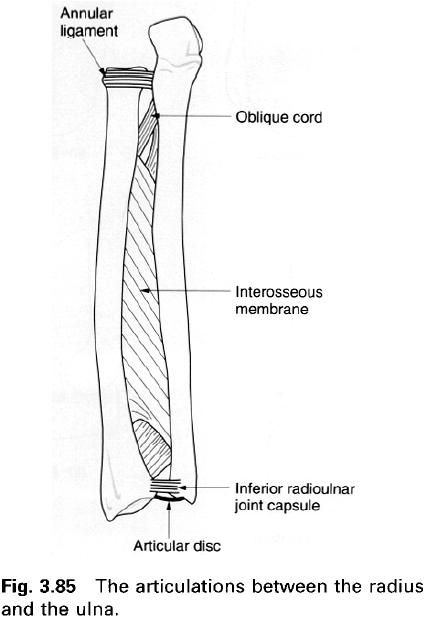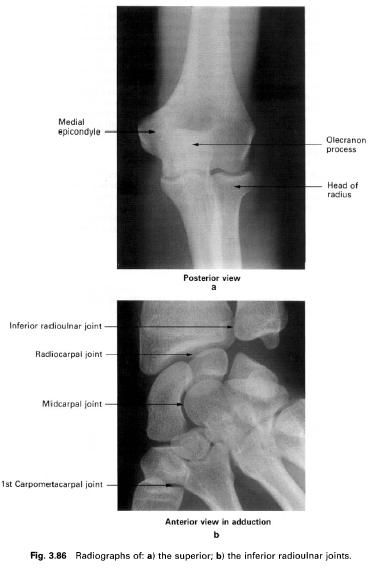Introduction
As well as articulating independently with the humerus at the elbow joint, the radius and ulna also articulate with each other. They do so at their proximal
and distal ends by a synovial joints of the pivot type, and by an interosseus
membrane in the manner of a syndesmosis along their shafts. The predominant
movement between the two bones is a rotation of the radius around the ulna,
so that the two bones cross in space, producing pronation, and the reverse
movement to bring the bones into parallel alignment producing supination. In
pronation and supination the hand is
carried with the rotation of the forearm, thereby giving a further axis of
movement of the hand at the wrist.
Indeed, in functional terms the combination of the forearm and the movements
possible at the wrist means that the hand
is united to the arm by a universal joint. The fact that the various axes about
which movement occurs do not all pass through a common point, and that several
joints are involved, gives stability to the hand
when performing delicate tasks.
Without freely movable joints between the radius and ulna, perhaps the evolutionary development of the hand as a manipulative tool would not
have been so successful. Nor perhaps would there have been so much development
and enlargement of the brain, particularly of the cerebral cortex.











0 коментара:
Постави коментар